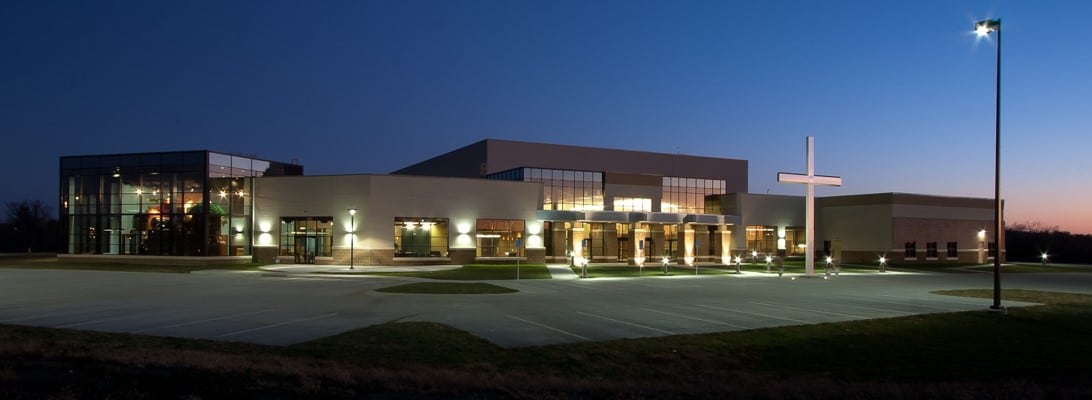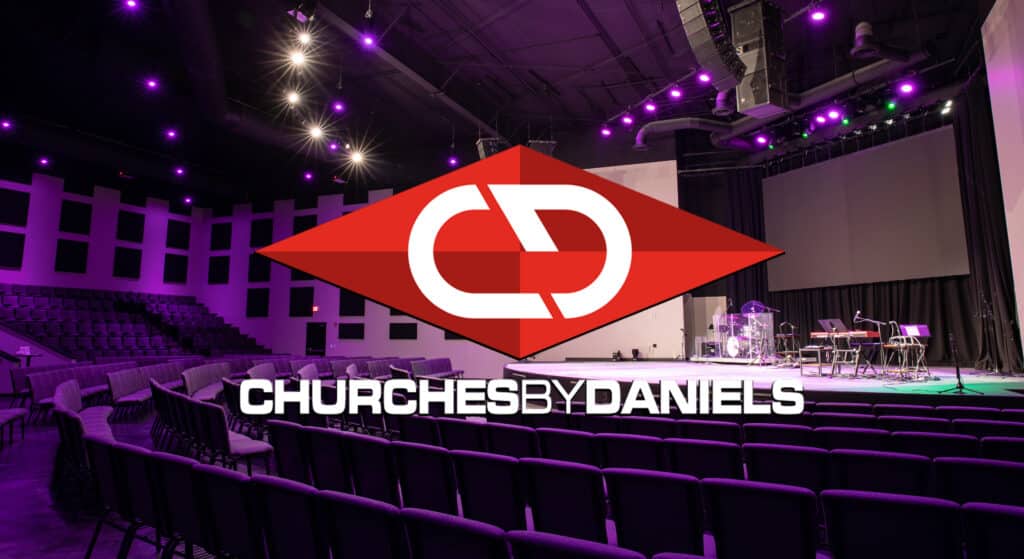By David McKnight
The past year presented unique challenges to churches along with the rest of the country. While we look forward to the time the restrictions placed on public gatherings are relaxed, and crowds can begin to return to corporate worship in larger settings, what will the lasting effect be on church design and construction?
Let’s review several different aspects of church design and construction to consider what those effects may be.
Design Changes to Churches
Regardless of the political implications of the government required or recommended pandemic measures you had to deal with in order to meet, hopefully, we can all find common ground with this statement: “We want people to feel the church is a safe place to gather.”
Some design features you might see more frequently in new church facilities are touchless features, automatic door openers, light sensors, sinks and restroom fixtures. Water fountains are still required by building code but had to be put out of use during the pandemic. Bottle fillers can be added to facilities as an alternative way for public water.
Keeping your facility clean can also give people a boost of confidence in your facility being a safe place to attend. Hand sanitizing stations not only in restrooms but your foyer and around your building should be a basic starting point.
For the higher levels of clean, you could consider sanitizing UVC lights or similar sanitizing devices in your HVAC systems to help clean your air. There are anti-microbial surfaces to use for countertops and door handles. These items probably will not be widespread, but they could become more common.
Other design changes will center around the ministries of the church. Certainly, technology has played a huge role in church life for the past 12 months. We see this as a systemic change moving forward.
Video editing rooms and video studios will be common spaces needed in the church moving forward. Equipping sanctuaries with proper technology and lighting will continue to be important. Internet bandwidth and speed are necessary for the digital church campus to be effective.
Community-focused buildings will continue to make differences in people’s lives. We see an increase in spaces that meet people in your community’s needs, like food banks, as well as children and youth spaces.
You might have a difficult time having a large crowd gathering for worship, but you can still share the gospel with deeds and words. As towns, schools and even governments look for places that can open to help people, multi-ministry facilities will continue to be tools for churches to share the good news.
Costs Are Rising
It can be hard to generalize how church building costs are affected because we see a wide divergence in different parts of the country in terms of restrictions, labor force and material supply. However, there are some big factors that will have a definite impact.
Before 2020, construction cost in America increased a little less than 5% per year over the last five-year period. As of 2020, the pandemic makes determining comparison numbers difficult. The national average has been reported to have regressed about 1/2% in 2020, but we have not actually found this to be true in our operations.
Supply chain interruptions and high demand at certain times cause specific product spikes. For example, in summer of 2020, wood products more than doubled in cost within a few weeks of time. The price then receded from that level, but it is still much higher than before the spike.
Electronic products have also been in short supply, as well as other materials that are put together in factories. As 2020 wound down, steel prices had been increasing at a 4% rate each month with a recent 30% increase in February. Now, copper and other metal prices are climbing at a similar rate.
The construction workforce also remains a concern. As baby boomers reach retirement age, much of the skilled labor work force is leaving and not being replaced at the same rate.
According to a labor study by the Business Research Group Conference Board, since 1995, the number of men aged 16 to 24 in blue collar jobs has dropped by 10%. This tightening of skilled tradesmen will drive up the cost of labor and, therefore, the cost of construction.
Another inflation factor is the continued printing of money and debt our government takes on. This will result in inflation, and we are just starting to see the beginning reach us now. So many factors are swirling around that it is hard to predict, but at the very least, we believe construction costs will continue to increase.
Decision Making
How do churches make long-term decisions in the next few years? One thing the pandemic disrupted is data for comparison.
Many churches won’t want to compare their 2019 attendance numbers with their 2020 ones. Some churches’ offerings have increased, while others have decreased since the pandemic began.
The point is that data comparison of attendance and finances may not provide much help in making decisions for the next few years.
But can you wait two more years to start planning? Buildings are getting more expensive by the day, so you do not want to delay if you don’t have to.
So, how do you make a decision about your facility needs?
First, make sure you have unity within your leadership for the mission and vision of your church. Like it or not, we have had some major shifts to the world in which we live. The mission should not change, but the experiences of the past year and the outlook for the future may have you adjusting your ministry strategies.
When you have mission and vision in place, the goals and strategies will come out of that. This is where you can identify facility needs.
Next, decide how urgent your facility needs are. Is it a long-term need or an urgent one? Realize that the planning process will take time, so even long-term needs require addressing well in advance.
The church should not be afraid to act. Even though we do not know the future, we serve the one who does.
It is important to show our congregations, our community and our world that we are making ministry decisions not out of fear, but out of facts, wisdom, and, most importantly, God’s guidance.
David McKnight is president of The McKnight Group, which specializes in the church architecture, design, and construction of multi-ministry buildings that work, www.mcknightgroup.com.









